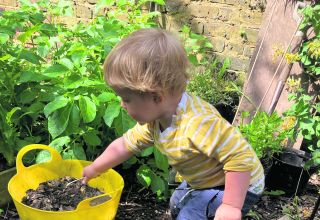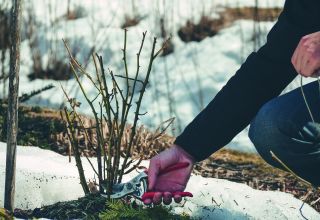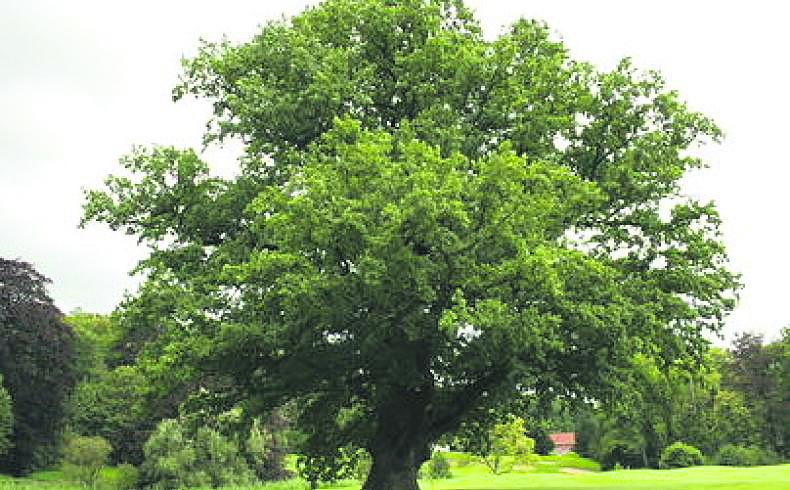
Country Gardener reader William Bradshaw moved into his Somerset garden twenty years ago. His first action in the new garden was to plant trees- for the long term. It is a decision he has never regretted.
There is a lovely quote that never seems truer for me than now.
“The best time to plant a tree was 20 years ago. The second best time is now”
Well, twenty years ago on a memorable sunny November 1st we moved from just north of Lincoln to a new home and garden in Somerset near Illminster.
We had fallen in love with the house and garden and it wasn’t too much of a problem that both needed some attention. The garden was almost one and a half acres and was open to the elements, mostly lawn with a few borders straggled around. It didn’t have any character.
It didn’t have any trees.
While we were waiting to move in we hatched a plan. If this was the place where we intended to live for a long while then we wanted to plant trees and plant them straight away. I spent weeks sorting out the trees and we planted them all that first autumn
and winter.
And this is really why I am putting pen to paper for your excellent magazine to advocate how important it is to plant trees and especially in a new garden. My eldest son has just moved to a new garden and we have just bought him half a dozen trees in the belief that while he might agree with the principles involved -my guess is he would never actually get round to doing anything about it.
My garden now is a delight, mature, protected from the elements, plenty of shade, full of wildlife and more than anything I know it reflects the seasons which we should all be grateful for.
I have now taken to boring my grandson with this. I tell him that planting a tree can be an act of gratitude. Trees are an integral part of human life and human history. By planting a tree, we are in an act of giving back to what trees have given us. Trees have provided food, shelter, wood for warmth, allowed us to build boats and homes and most importantly oxygen to breath.
So what is in my garden and what advice have I passed to the next generation (isn’t that a wonderful thing to be able to write that!)
It may be a conservative choice but I planted all these exactly twenty years ago.
Alder, Alnus glutinosa
This is a quick-growing, nitrogen-fixing, insect-harbouring, bird-loving ‘son of a gun’ tree and we have been so grateful for it in our garden. Planting an alder is a great way to invite birds and insects to live in your garden. Our tree grew really fast. In the winter, male catkins and female cones dangle from the branches.
Crab apple, Malus sylvestris
I like apple trees in my garden but I love my crab apple.
Crab apples are essentially the same as apples except that they bear smaller, tarter fruits. The tree offers shelter and food for visiting birds. Ours has been positioned at the bottom of the garden and under-planted with shade-loving perennials.
The fruit are edible, although only palatable when cooked – try making crab apple jelly and we planted two ‘John Downie’ (larger oval yellow-red fruit), and then ‘Evereste’ (small, round, yellowy-orange fruit)
English oak, Quercus robur
Yes they are slow growing but not as slow as many people think and I feel there is something wonderful about growing an oak tree. It is a tree famous for having strong timber, being a home for insects, and for living to a ripe old age. And what could be easier and try what we did -gather some acorns from the ground. Choose fat, ripe acorns – nice and brown all over. Ignore any that are green (these are unripe) or dark (these have started to rot).
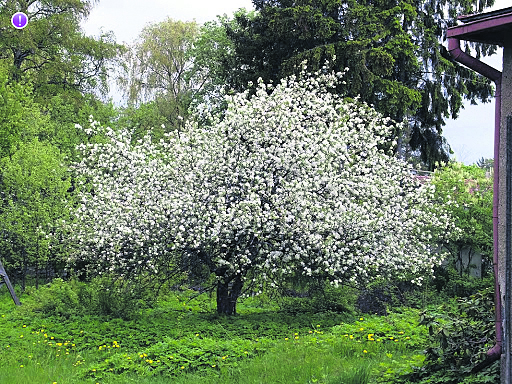
Crab apple, Malus sylvestris 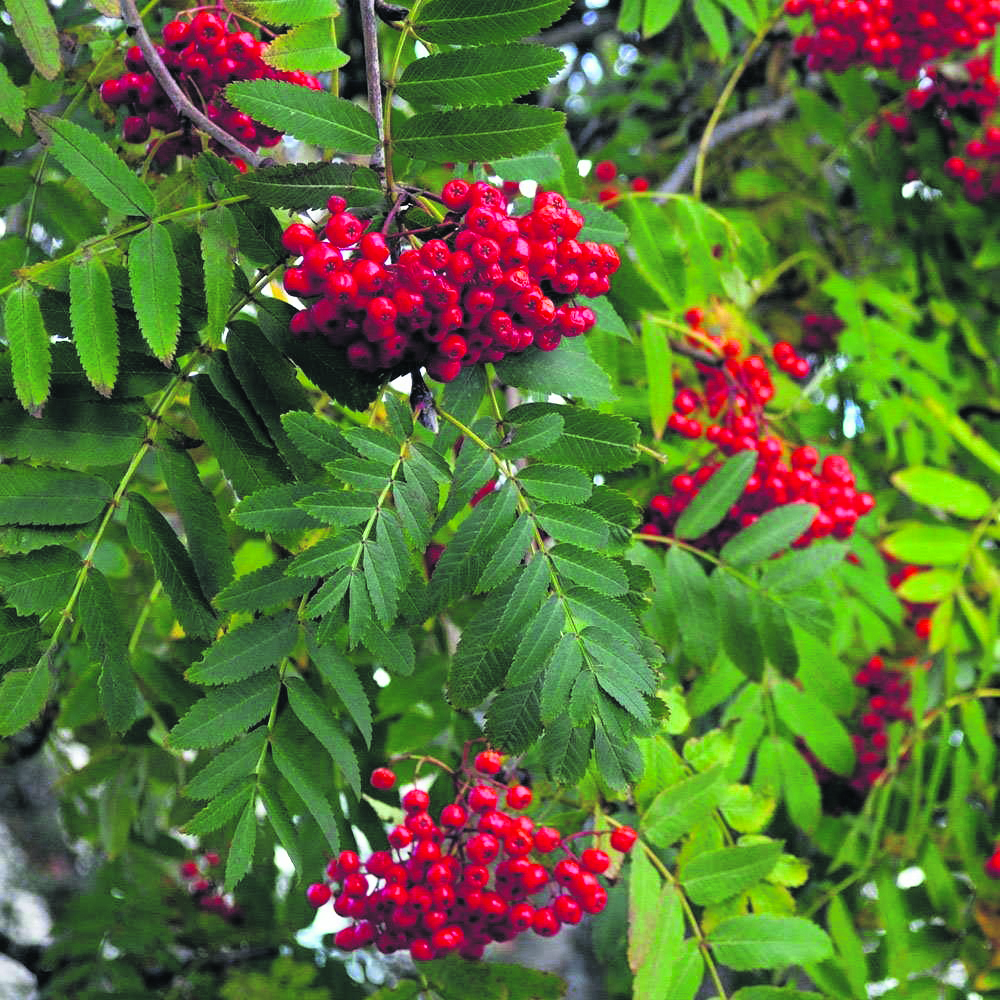
Rowan, Sorbus aucuparia 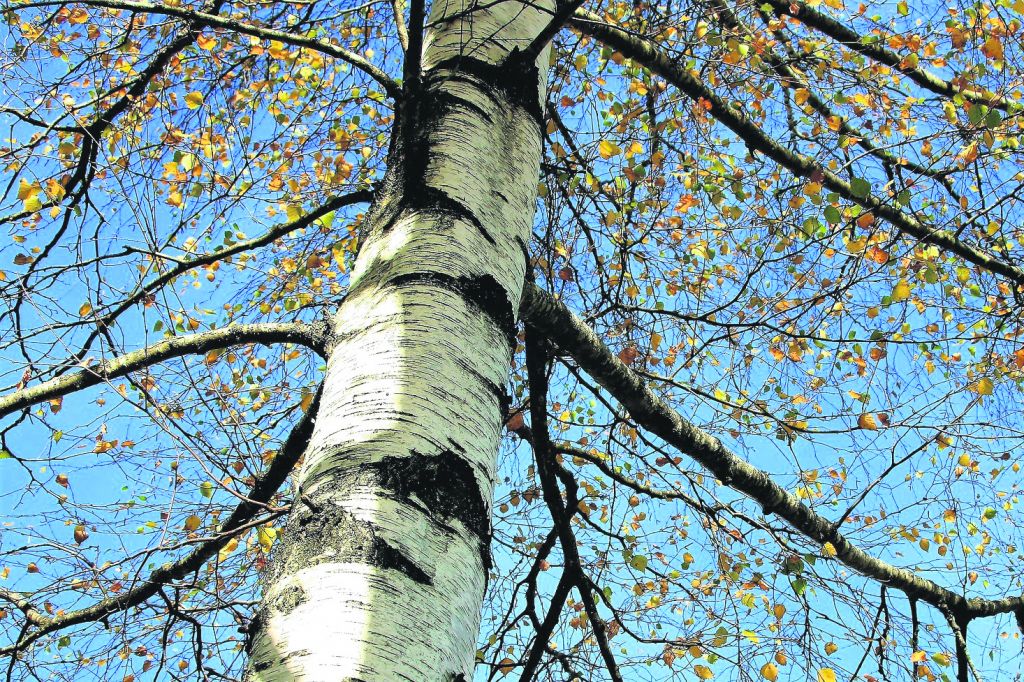
Crab apple, Malus sylvestris
Hawthorn, Crataegus monogyna
Hawthorn is a welcoming sign of spring in our garden. The hawthorn is also known as the May tree, and you’ve probably seen loads of its beautiful white flowers blooming in the month of May.
Holly, Ilex aquifolium
We wanted something all year round in the garden and the holly was something my wife insisted on. There’s nothing like seeing the red berries and the shiny, spiky leaves of holly to brighten a dark, cold
winter’s day.
Rowan, Sorbus aucuparia
A tough and gorgeous bright red-berried bonanza of a tree and boy does in brighten up our garden! It is a tree that dares to grow where others cannot. We planted ours perhaps a bit too near the house. I later discovered that it used to be planted outside houses to ward off witches, but it’s a lovely tree with bright red berries!
Silver birch, Betula pendula
I have always has a passion for shiny bark trees and this quicksilver tree grows very fast and has amazing bark. Ours is mature now – over 30 metres tall, very upright and a focal point for the far end of the garden and has a wonderful canopy with triangular shaped leaves.




